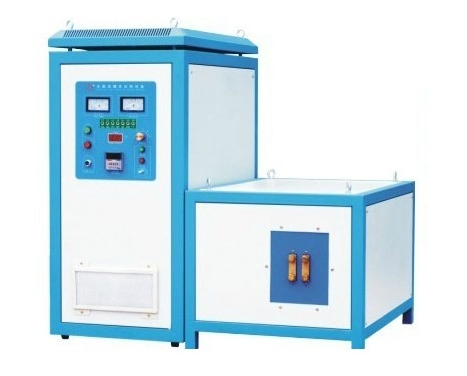- 28
- Feb
Process Application of High Frequency Quenching Equipment on Piston Pins of Automobile Engines
Process Application of High Frequency Quenching Equipment on Piston Pins of Automobile Engines
Piston Pin (English name: Piston Pin) is a cylindrical pin mounted on the piston skirt. Its middle part passes through the small head hole of the connecting rod to connect the piston and the connecting rod and transmit the gas force that the piston bears to link. In order to reduce weight, piston pins are generally made of high-quality alloy steel and made hollow. The structural shape of the plug pin is very simple, basically a thick-walled hollow cylinder. The inner hole has cylindrical shape, two-section truncated cone shape and combined shape. Cylindrical holes are easy to process, but the mass of the piston pin is larger; the mass of the piston pin of the two-section truncated cone hole is smaller, and because the bending moment of the piston pin is the largest in the middle, it is close to the beam of equal strength, but it is tapered. Hole processing is difficult. In this design, a piston pin with an original inner hole is selected.
Service conditions:
(1) Under high temperature conditions, withstand strong periodic impact, bending and shearing
(2) The pin surface bears greater friction and wear.
1. Failure mode: due to the periodic stress, fatigue fracture and severe surface wear occur.
Performance requirements:
2. The piston pin bears a large periodic impact load under high temperature conditions, and because the piston pin swings at a small angle in the pin hole, it is difficult to form a lubricating oil film, so the lubrication conditions are poor. For this reason, the piston pin must have sufficient rigidity, strength and wear resistance, and the mass should be as small as possible. The pin and the pin hole should have an appropriate clearance and good surface quality. Under normal circumstances, the stiffness of the piston pin is particularly important. If the piston pin is bent and deformed, the piston pin seat may be damaged;
(2) It has sufficient impact toughness;
(3) It has high fatigue strength.
3. Technical requirements
Piston pin technical requirements:
①The entire surface of the piston pin is carburized, and the depth of the carburized layer is 0.8 ~ 1.2mm. The carburized layer should be uniformly transitioned to the core structure without sudden change.
②The surface hardness is 58-64 HRC, and the hardness difference on the same piston pin should be ≤3 HRC.
③The hardness of the piston pin core is 24 to 40 HRC.
④ The microstructure of the carburized layer of the piston pin should be fine needle martensite, allowing a small amount of evenly distributed fine granular carbides, and no needle-like and continuous network-like distribution of free carbides. The needle shape of the core should be low-carbon martensite and ferrite.
In response to the above requirements and needs, reasonable technology and equipment are needed. After carburizing, the carburized steel piston pin is quenched and tempered at low temperature. Piston pins with higher performance requirements are treated by secondary quenching and tempering. The purpose of the first quenching is to eliminate the network cementite in the cemented layer and refine the core structure; the second quenching is to refine the infiltration Layer organization and make the permeable layer get high hardness. Piston pins with higher alloying elements should undergo cryogenic treatment after carburizing and quenching to reduce the amount of retained austenite in the carburized layer, especially piston pins that require dimensional stability, and cryogenic treatment is required to control retained austenite quantity.

